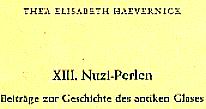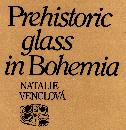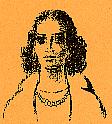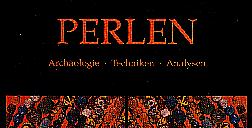|
A Sampling of Continental European Women Bead Reseachers' Publications

|
If you pardon me, I'll preface this with a personal story. When teaching English in Iran the late Louise Jones, took me under her wing. We spent many an evening sharing her food and vodka. One night she declared that she was going to keep all the silver jewelry and the very old beads she had collected over the years, but was going to sell the rest of the beads.
|
|

|
"To whom?"
"Do you want them?"
"I might if the price is right."
|
|

|
So for the princely sum of $10.00, I bought her beads. That weekend she took me to the bazaar and introduced me to "her bead man," who subsequently became a friend. Fortunately, two other colleagues had Van der Sleen's Handbook on Beads and The Bead Journal 2(2). These linked me with people and publications. It was apparent that no one really knew about beads in Iran.
|
|


|
I lived near the British Council in Isfahan and by reading in the library soon discovered that archaeology told me most about my beads. Going deeper, I realized that beads are universal and so telling of human behavior that their study could be very important. Could they not contribute as much as the study of coins or ceramics? It is, after all, not about beads, but about people. I started to wonder why no one had studied them before. The first answer I came up with was gender bias.
|
|

|
Most archaeologists (and historians, ethnographers, anthropologists) are white men. Beads are just "women's trifles," so they are not important. The Great White Male Archaeologist had no time for them, so he assigned them to an undergraduate, often a young woman. She had nowhere to turn, because there were no books, no courses, no one to ask. The best she could do was to describe them.
|
|

|
Bolstering this idea is the work if pioneering women archaeologists. Mary Leaky, Gertrude Caton-Thomson, Madeline Colani and Thea Elisabeth Haevernick handled beads very competently. The same cannot be said of most of their male counterparts.
|
|

|
What is the status of women among bead researchers today? In Asia there are an increasing number. North America has a large group of researchers. They are mostly men. Europe has the other large group of bead researchers.
|
|

Edited by Uta von Freeden; half the papers are by women.
|
Most early European bead researchers were men but then there was Thea Elisabeth Haevernick. She published more on beads than any four men put together. Her work is a bonanza for (German literate) scholars. It must have been inspiring to young female students to be citing this remarkable woman's papers all the time. She has directly or indirectly influenced two generations of European bead researchers. There are male European bead researchers, but women outnumber them by a large margin.
|
|

|
They joke about it sometimes, "After all, beads are just women's things." Joking aside, bead research is well served in Europe, especially Central and Eastern Europe (including Russia). And it is served principally by women.
|
